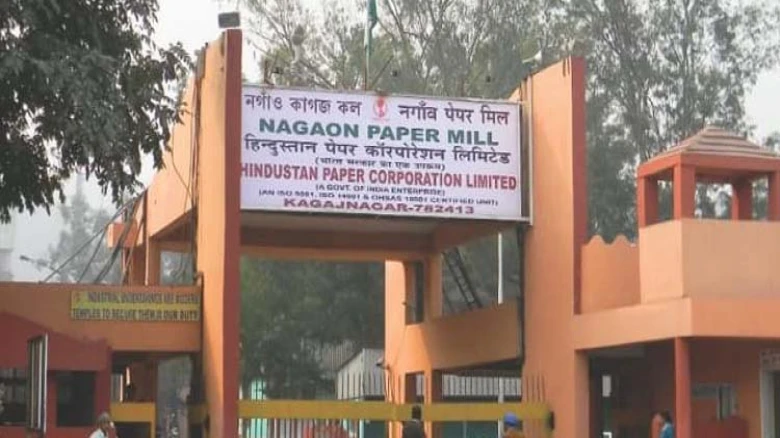Nonetheless, villagers and residents of the Morigaon district's Jagi Road are haunted by the dread of a radioactive leak.
Digital Desk: A number of people are concerned about the possible disposal of radioactive sources (COBALT-60) at the Nagaon Paper Mill, a Hindustan Paper Corporation Limited unit, prior to consultation of the experts at the Bhaba Atomic Research Centre (BARC).
Given how risky and damaging such radioactive source disposal is to people, it is likely to have an effect on the neighbourhood.
As per well-informed sources, there hasn't been any official statement about the matter indicating whether or not the paper mill's relevant authorities had any correspondence with BARC on the matter.
Nonetheless, villagers and residents of the Morigaon district's Jagi Road are haunted by the dread of a radioactive leak.
The state government was already notified of the problem by a group of former workers and employees of the paper factory, but as of right now, nothing has been done.
It is important to remember that there is a chance of a radioactive accident like the one that happened at the Mayapuri trash market in Delhi in March 2010 if no consultation is held.
According to media reports, a research organisation disposed of the source, a gamma unit containing Cobalt-60 pencils, inappropriately at a Delhi scrap market, in breach of national standards for radiation protection and the safety of radioactive sources.
The equipment was disassembled by gullible scrap traders who purchased the item. Seven radiation injuries and one radiation fatality were the consequence of this incident, which also produced the worst radiation disaster that has been documented in India to date. The medical progress of five patients receiving treatment at the All India Institute of Medical Sciences hospital located in New Delhi.
The haematological type of acute radiation syndrome and local cutaneous radiation damage was experienced by all five individuals. Four patients who received doses ranging from 0.6 to 2.8 Gy survived with intensive or supportive care; however, on Day 16 following hospitalisation, the patient with the greatest exposure—3.1 Gy—passed away from acute respiratory distress syndrome and multi-organ failure.
The incident mentioned above shows the existing deficiencies in regulation, infrastructure, and expertise regarding the management of radioactive materials.
In what way does the digester of Nagaon Paper Mill need to be cleaned up of radioactive sources?
Within the pulp mill are seven radioactive sources that are now operating (COBALT-60). Three of them were fitted with equipment connected to digesters, and four of them were installed in digesters.
Activated sources have not been disposed of at BARC, even though radioactive sources are toxic and harmful to human health. The sources remain active even if the mill was shut down starting in 2017.
As such, the responsible authorities ought to forward the radioactive sources to BARC for expedited disposal.

Leave A Comment